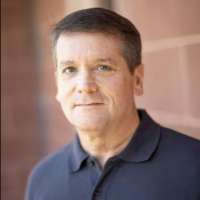Estimated read time: 6-7 minutes
SALT LAKE CITY — The University of Utah is celebrating its 175th anniversary this year at a moment of historic disruption across higher education.
So school president Taylor Randall is feeling nostalgic — even as he eyes the promises of the future.
During his presentation Wednesday to the Legislature's Higher Education Subcommittee, Randall highlighted the beginnings of Utah's flagship university while also signaling the pivotal role the school can play in emerging fields such as AI, nuclear engineering and genetics.
The school president also spoke of the school's efforts to lighten the burdens facing many of today's university students in Utah — including rising housing costs.
Founded on Feb. 28, 1850, the University of Utah was initially financed, in part, by a $1,200 donation from Brigham Young. The maiden class of students met in a house in downtown Salt Lake City.
One of the school's founding regents, William Ivins Appleby, delivered words almost two centuries ago that remain apt today, said Randall.
Appleby hoped to establish an institution dedicated, in his words, to "the perpetual increase of knowledge" that would be disseminated in all its various branches — "where literature, arts, sciences, can be taught in their present perfection and improved thereon."

Appleby, added Randall, hoped the fledgling institution of higher learning in Utah would draw the "poor and oppressed" from around the globe.
The school remains committed to remaining affordable to all, said Randall.
"We hope that our vision today is one that takes those initial thoughts from those initial founders and actually accelerates them."
Reacting to a 'Sputnik moment'
Randall told the subcommittee that the University of Utah does many things differently, highlighting several tech-driven initiatives and missions at the school.
"Like all universities, we care deeply about human potential — but because of our research and our medical missions, we also add a lot to national competitiveness, economic growth and the excellence of the state."
The United States, he added, is facing a "Sputnik Moment" — recalling the alarming Cold War chapter when the Russians launched a satellite prior to the United States.
Today, China is outpacing the United States in AI and other critical technologies — and American universities such as the University of Utah have to be responsive to catch-up and eventually surpass their global tech rivals.
Randall said the University of Utah is determined to take the AI lead.
A year ago, the school announced their initial AI initiatives. And this year, "we will be announcing an AI Czar, for lack of a better term, on our campus.

"What we've seen in this first year are hundreds of applications — particularly dealing with how to teach students and how to educate students in artificial intelligence," he said. "This next year, our big focus will be on hiring cluster hires of faculty; individuals that can not only teach, but bring some of these technologies forward."
Randall identified "incredible potential for AI" to extend to the clinical classroom, particularly to rural areas far removed from medical centers.
Meanwhile, the school's Huntsman Cancer Institute is developing the ability to read charts with AI — actually identifying early cancer warnings while connecting with and treating individuals that may be miles away from the school's cancer centers.
Nuclear engineering and genetics
Randall said the University of Utah also intends to further invest in the school's nuclear engineering program, ushering in a "nuclear renaissance."
The university's nuclear program, he said, has been around since 1975.
"Like most nuclear programs, it has existed under a tough regulatory environment — so jobs have now expanded. But we're excited to work with you here in the state to expand this program."
The school president also highlighted campus opportunities in the field of genetics.
"The potential in gene therapy and solving basic human problems is immense," said Randall, including promising research at the university to advance gene therapy for cardiac disease, which will affect almost a third of all Americans.
"We have only begun to scratch the surface," he said of the school's genetic research.
The university's reach in such essential STEM fields stretches beyond research.
"Hundreds of students get education," he said. "In the Huntsman Cancer Center alone, there are over 600 students, both undergraduate and graduate students, involved in moving cancer care and cancer discovery forward."
Randall said he could share similar stories in other fields of study.
"This is the way that we educate in a research university to create very sophisticated scientists that can tackle the challenges of the coming world."
Randall said much of the future reallocating efforts directed by the Legislature will go to increasing the university's pool of STEM graduates.
"This base of scientists has to be available for the future technology development for tomorrow — and we're very excited about that.
Operational excellence
The University of Utah's operational excellence efforts, reported Randall, are anchored to "making sure our resources are being put strategically in the right places to accomplish our mission."
Over a year ago, he reported, the school put together a team with a consultant that now has over 105 improvement projects.
"We are on track to realize roughly $100 million in either cost-avoidance or savings that can be reallocated," he said. Such savings could be passed on to, say, AI research and other essential programs.
"So we've got to find dollars and reallocate to the things that we think will drive the future," he said.

Housing issues
Randall noted that Utah's current housing market challenges are impacting many individuals' capacity to secure higher education. Rental rates in Salt Lake City have jumped 17% over the past four years.
One solution, he added, is getting students living within close proximity to the school.
"If we can get students living close to campus, the retention rates increase, graduation rates increase and job outcomes increase," he said.
Randall said the University of Utah is expected to launch "a massive in-state housing scholarship program to complement what we have been doing on the tuition so that we can actually get our students near campus and completing their degrees."
Hours after Randall's legislative presentation, the school hosted a groundbreaking ceremony formally signaling construction of a $155 million student housing complex that will add more than 1,400 beds to the campus.
The University of Utah is reportedly working with the private sector, utilizing innovative methods to finance the development.
Addressing job placement for University of Utah graduates, Randall shared preliminary data with the legislative committee indicating grads were earning salaries across a range of fields that are above Utah's median salaries.
Randall also pointed to upcoming projects at the school, including a medical school partnership with Utah Tech University in St. George designed to increase the number of primary care physicians serving rural communities.
The school president concluded his presentation saying the University of Utah is committed to the pursuit of excellence, while also collaborating with lawmakers and industry.
"We want to respond to your requests and we appreciate the insights that you have on how we can direct this university to be a blessing in the lives of all Utahns."











